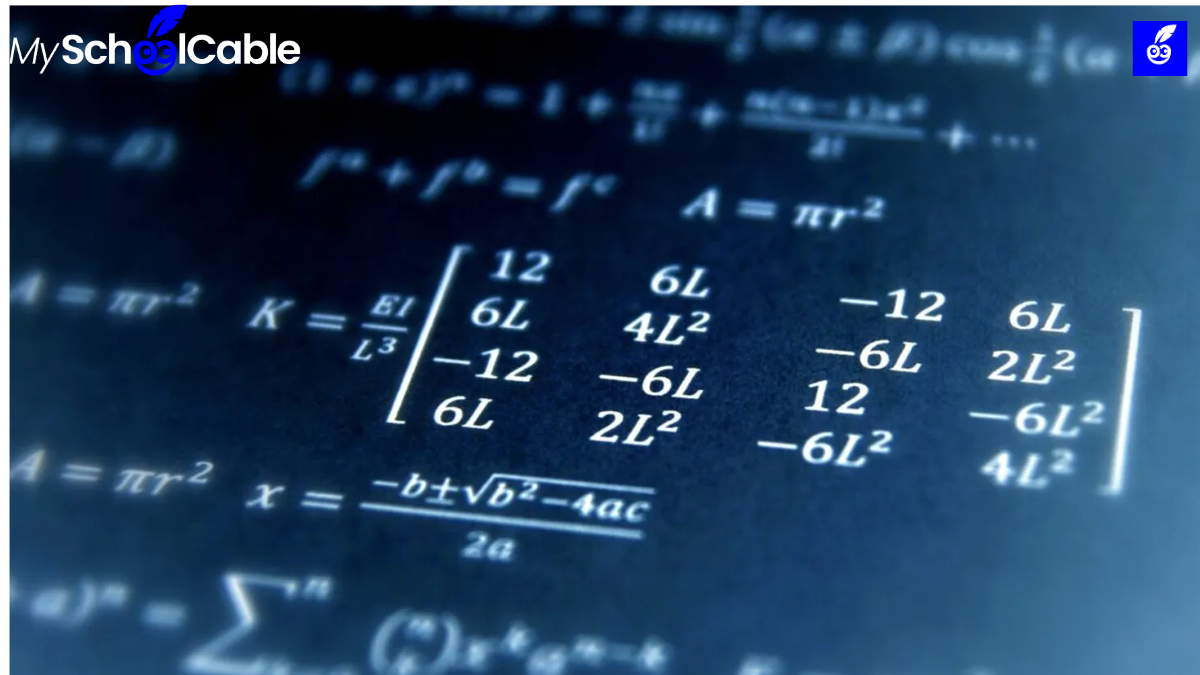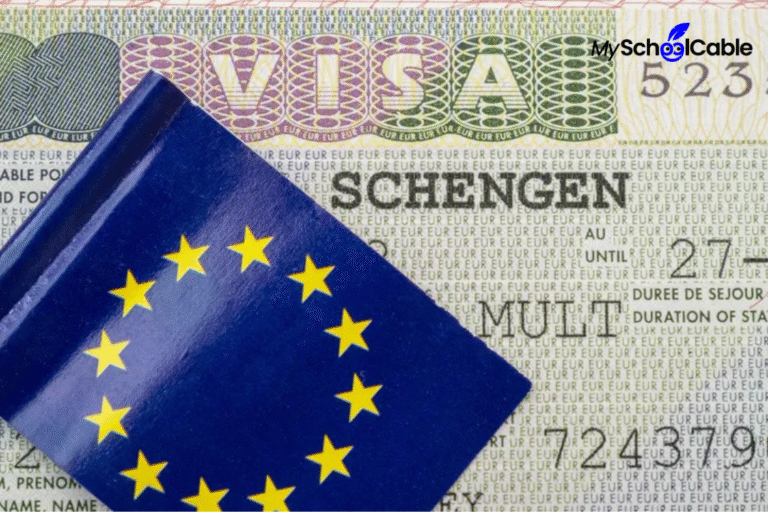If you are here to find out the hardest SAT math questions, you are in the right place. The SAT is made up of two sections: Evidence-Based Reading and Writing (ERW) and Mathematics.
For most candidates, the Math section is the most challenging part of the exam. Data from the College Board—the official SAT administrators—shows that in 2023, only 28% of candidates scored between 500 and 590 in their SAT math.
You’ve probably seen such statistics and heard about mass failure, and that’s what’s driving you here. You’re preparing earnestly to ace the SATs, particularly the hardest SAT math questions.
We’re with you on that goal, and that’s why this article tackles the hardest SAT math questions of 2025, providing in-depth solutions to each question.
Also, we have other articles on how many times you can take the SAT, and if you are aiming for the IVY League, you might want to check out the SAT score considered as good for the Ivy League. You should also check out our guide on the best SAT prep books to aid in your preparation for the exam.
Table of Contents
- 10 Hardest SAT Math Questions with Answers
- Hardest SAT Math Questions #1
- Hardest SAT Math Questions #2
- Hardest SAT Math Questions #3
- Hardest SAT Math Questions #5
- Hardest SAT Math Questions #6
- Hardest SAT Math Questions #7
- Hardest SAT Math Questions #8
- Hardest SAT Math Questions #9
- Hardest SAT Math Questions #10
- Answers to the Hardest SAT Math Topics
- The Hardest SAT Math Topics
- Frequently Asked Questions
- Conclusion: Learn the Hardest SAT Math Questions in 2025
- Recommendations
- References
10 Hardest SAT Math Questions with Answers
If you’re aiming for a perfect SAT score in Math, and would like to push yourself way beyond your limits, one of the best ways to do that is to challenge yourself with the hardest SAT math questions.
Also read: What Is a Perfect SAT Score?
Take several mock tests—from the beginner level to the advanced levels—noting your mistakes and correcting yourself on the go. Getting familiar with these likely questions will build your knowledge and preparation for the SAT.
You can find practice tests on the College Board’s digital platform, Bluebook, and also on Khan Academy. You can also download PDF practice tests on the College Board’s website. But for starters, let’s challenge you on the spot with some of the hardest SAT math questions in 2025.
In the following paragraphs, we’ll explore some of the most difficult mathematical equations from the College Board’s SAT practice exams. The answers to these questions have been provided at the tail end of all the questions, just so you can work out the equations before peeking at the answers.
Note: The following questions were sourced directly from the College Board’s digital SAT practice tests, specifically bundles 4 – 9.
Hardest SAT Math Questions #1
Line t in the xy-plane has a slope of 1/3 and passes through the point (9, 10). Which equation defines line t?
- y = 13x − ⅓
- y = 9x + 10
- y = − x/3 + 10
- y = − x/3 + 13
Hardest SAT Math Questions #2
The function fx = 1/9 (x − 7)² +3 gives a metal ball’s height above the ground f(x), in inches,
x seconds after it started moving on a track, where 0≤ x ≤ 10. Which of the following is the best interpretation of the vertex of the graph of y = f(x) in the xy-plane?
- The metal ball’s minimum height was 3 inches above the ground.
- The metal ball’s minimum height was 7 inches above the ground.
- The metal ball’s height was 3 inches above the ground when it started moving.
- The metal ball’s height was 7 inches above the ground when it started moving.
Also read: 15 Cheapest Schools in Canada for International Students
Hardest SAT Math Questions #3
In triangle JKL, cos (K) = 24/51 and angle J is a right angle. What is the value of cos (L)?
Hardest SAT Math Questions #4
Triangle FGH is similar to triangle JKL, where angle F corresponds to angle J and angles G and K are right angles. If sin (F) = 308/317, what is the value of sin (J)?
- 75/317
- 308/317
- 317/308
- 317/75
Hardest SAT Math Questions #5
The function h estimates an object’s height, in feet, above the ground t seconds after the object is dropped, where b is a constant. The function estimates that the object is 3,364 feet above the ground when it is dropped at t = 0 . Approximately how many seconds after being dropped does the function estimate the object will hit the ground?
- 7.25
- 14.50
- 105.13
- 210.25
Hardest SAT Math Questions #6
The graph of the quadratic function y = f(x) is shown. What is the vertex of the graph?
- (0, −2)
- (0, −3)
- (0, 2)
- (0, 3)
Also read: 10 Cheapest Universities in Finland for International Students
Hardest SAT Math Questions #7
An object was launched upward from a platform. The graph shown models the height above ground, y, in meters, of the object x seconds after it was launched. For which of the following intervals of time was the height of the object increasing for the entire interval?
- From x = 0 to x = 2
- From x = 0 to x = 4
- From x = 2 to x = 3
- From x = 3 to x = 4
Hardest SAT Math Questions #8
The kinetic energy, in joules, of an object with mass 9 kilograms traveling at a speed of v meters per second is given by the function K, where K(v) = 9/2v² . Which of the following is the best interpretation of K(34) = 5,202 in this context?
- The object traveling at 34 meters per second has a kinetic energy of 5,202 joules.
- The object traveling at 340 meters per second has a kinetic energy of 5,202 joules.
- The object traveling at 5,202 meters per second has a kinetic energy of 34 joules.
- The object traveling at 23,409 meters per second has a kinetic energy of 34 joules.
Hardest SAT Math Questions #9
In △RST, the measure of ∠R is 63°. Which of the following could be the measure, in degrees, of ∠S ?
- 116
- 118
- 126
- 180
Also read: 10 Best Scholarships for Trade Schools
Hardest SAT Math Questions #10
For a snowstorm in a certain town, the minimum rate of snowfall recorded was 0.6 inches per hour, and the maximum rate of snowfall recorded was 1.8 inches per hour. Which inequality is true for all values of s, where s represents a rate of snowfall, in inches per hour, recorded for this snowstorm?
- s ≥ 2.4
- s ≥ 1.8
- 0 ≤ s ≤ 0.6
- 0.6 ≤ s ≤ 1.8
Answers to the Hardest SAT Math Topics
Note: The following answers were provided in the College Board’s digital SAT practice tests, specifically bundles 4 – 9
Answers to Questions 1 – 3
Question 1: Choice D is correct. The equation that defines line t in the xy-plane can be written in slope-intercept form y = mx + b, where m is the slope of line t and (0, b) is its y-intercept. Learn more here.
Question 2: Choice A is correct. The graph of a quadratic equation in the form y=a(x-h)² + k, where a, h, and k are positive constants, is a parabola that opens upward with vertex (h,k). The given function f(x)=1/9(x-7)² + 3 is in the form y=a(x-h)² + k, where y = f(x), a=1/9, h=7, and k=3.
Therefore, the graph of y=f(x) is a parabola that opens upwards with vertex (7,3). Since the parabola opens upward, the vertex of the graph of y=f(x) is the minimum value of f(x). Therefore, the minimum value of f (x) is 3.
Also read: How to Write SSP Essay | Full Guide
It’s given that f(x) =1/9(x-7)² + 3 represents the metal ball’s height above the ground, in inches, x seconds after it started moving on a track. Therefore, the best interpretation of the vertex of the graph of y=f (x) is that the metal ball’s minimum height was 3 inches above the ground.
Question 3: The correct answer is 15/17. It’s given that angle J is the right angle in triangle JKL. Therefore, the acute angles of triangle JKL are angle K and angle L. The hypotenuse of a right triangle is the side opposite its right angle. Therefore, the hypotenuse of triangle JKL is side KL.
Answers to Questions 4 – 5
Question 4: Choice B is correct. If two triangles are similar, then their corresponding angles are congruent. It’s given that the right triangle FGH is similar to the right triangle JKL and angle F corresponds to angle J. It follows that angle F is congruent to angle J and, therefore, the measure of angle F is equal to the measure of angle J. The sine ratios of angles of equal measure are equal. Since the measure of angle F is equal to the measure of angle J, sin(F) = Sin (J). It’s given that sin (F) = 317/308. Therefore, sin (J) is 317/308
Question 5: Choice B is correct. It’s given that the function h estimates that the object is 3,364 feet above the ground when it’s dropped at t=0. Substituting 3,364 for h(t) and 0 for t in the function h yields 3,364 = 16(0)² + b, or 3,364=b. Substituting 3,364 for b in the function h yields h(t) = -16t² + 3,364.
Also read: How to Study in the USA without IELTS
When the object hits the ground, its height will be 0 feet above the ground. Substituting 0 for h(t) in h(t) = 16t² + 3,364 yields 0 = -16t² + 3,364. Adding 16t² to each side of this equation yields 16t = 3,364. Dividing each side of this equation by 16 yields t 210.25 .
Since the object will hit the ground at a positive number of seconds after it’s dropped, the value of t can be found by taking the positive square root of each side of this equation, which yields t=14.50. It follows that the function estimates the object will hit the ground approximately 14.50 seconds after being dropped.
Answers to Questions 6 – 8
Question 6: Choice C is correct. The vertex of the graph of a quadratic function in the xy-plane is the point at which the graph is either at its minimum or maximum y-value. In the graph shown, the minimum y-value occurs at the point (0, 2).
Question 7: Choice A is correct. It’s given that the variable y represents the height, in meters, of the object above the ground. The graph shows that the height of the object was increasing from x=0 to x=2, and decreasing from x=2 to x=4. Therefore, the height of the object was increasing for the entire interval of time from x=0 to x=2.
Question 8: Choice A is correct. It’s given that the kinetic energy, in joules, of an object with a mass of 9 kilograms traveling at a speed of v meters per second is given by the function K, where K(v) = 9/2 v². It follows that in the equation K(34) =5,202, 34 is the value of v, or the speed of the object, in meters per second, and 5,202 is the kinetic energy, in joules, of the object at that speed. Therefore, the best interpretation of K(34) = 5,202 in this context is the object traveling at 34 meters per second has a kinetic energy of 5,202 joules.
Answers to Questions 9 – 10
Question 9: Choice A is correct. The sum of the measures of the angles of a triangle is 180°. Therefore, the sum of the measures of ∠R, ∠S, and ∠T is 180°. It’s given that the measure of ∠R is 63°. It follows that the sum of the measures of ∠S and ∠T is (180 6 – 3)°, or 117°. Therefore, the measure of ∠S, in degrees, must be less than 117. Of the given choices, only 116 is less than 117. Thus, the measure, in degrees, of ∠S could be 116.
Question 10: Choice D is correct. It’s given that for a snowstorm in a certain town, the minimum rate of snowfall recorded was 0.6 inches per hour, the maximum rate of snowfall recorded was 1.8 inches per hour, and s represents a rate of snowfall, in inches per hour, recorded for this snowstorm. It follows that the inequality 0.6 ≤ s ≤ 1.8 is true for all values of s.
The Hardest SAT Math Topics
SAT math questions cover a range of topics which have been taught in High school. From ratio, to quadratic equations, algebra and more, it takes candidates on a journey through their high school topics.
But what are the hardest SAT math questions that often give students difficulty, and as such, you should pay more attention to? The hardest SAT math topics are:
- Advanced quadratic equations
- Graph representation
- Trigonometry
- Exponentials
- Geometry
Frequently Asked Questions
What is the Hardest Portion of the SAT?
According to most SAT candidates, the hardest portion of the SAT is the math section.
How Many Questions Wrong is a 700 on the SAT Math?
There is no 700 score on the Math SAT scoreboard; the closest scores to 700 are 690 and 710. If your score falls within this range, you must have gotten 5 – 7 questions wrong. To learn more about the SAT scoring system, you can use one of the College Board’s Digital Scoring Paper.
Is 720 on the SAT Math Good?
Yes, 720 on the SAT Math is a pretty good score. If you have attained a similar score, or even higher, on the ERW section, then your total SAT score should be around 1440 – 1500. While this is not a perfect score, it gives you a good chance of gaining admission.
Conclusion: Learn the Hardest SAT Math Questions in 2025
With these practice questions, it’ll be easier for you to understand SAT standard questions and attempt even the most difficult ones.
There’s one thing you must remember—practice makes perfect. The more you learn and practice, the more skilled you are in solving even the hardest SAT math questions.
So learn, learn, learn, using the best SAT prep books. Practice, practice, practice, and you’ll ace those papers!
Recommendations
- Top 10 Best Scholarships for Sports Administration Majors
- IELTS Exam 2025 | Requirements, Dates, Syllabus
- How Long Does it Take to Write College Essay | Full Guide
- 15 Best Technical and Vocational Education Courses
- How to Write Undertaking Letter | Step-by-step Guide
References
- www.blog.prepscholar.com – The 15 Hardest SAT Math Questions Ever
- www.satsuite.collegeboard.org – Full-length Paper Practice Tests






